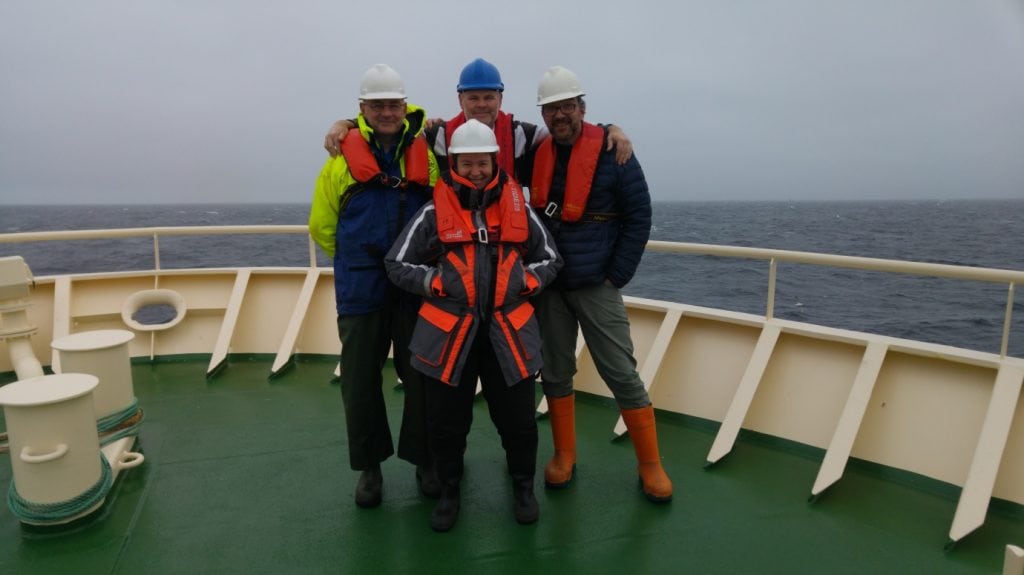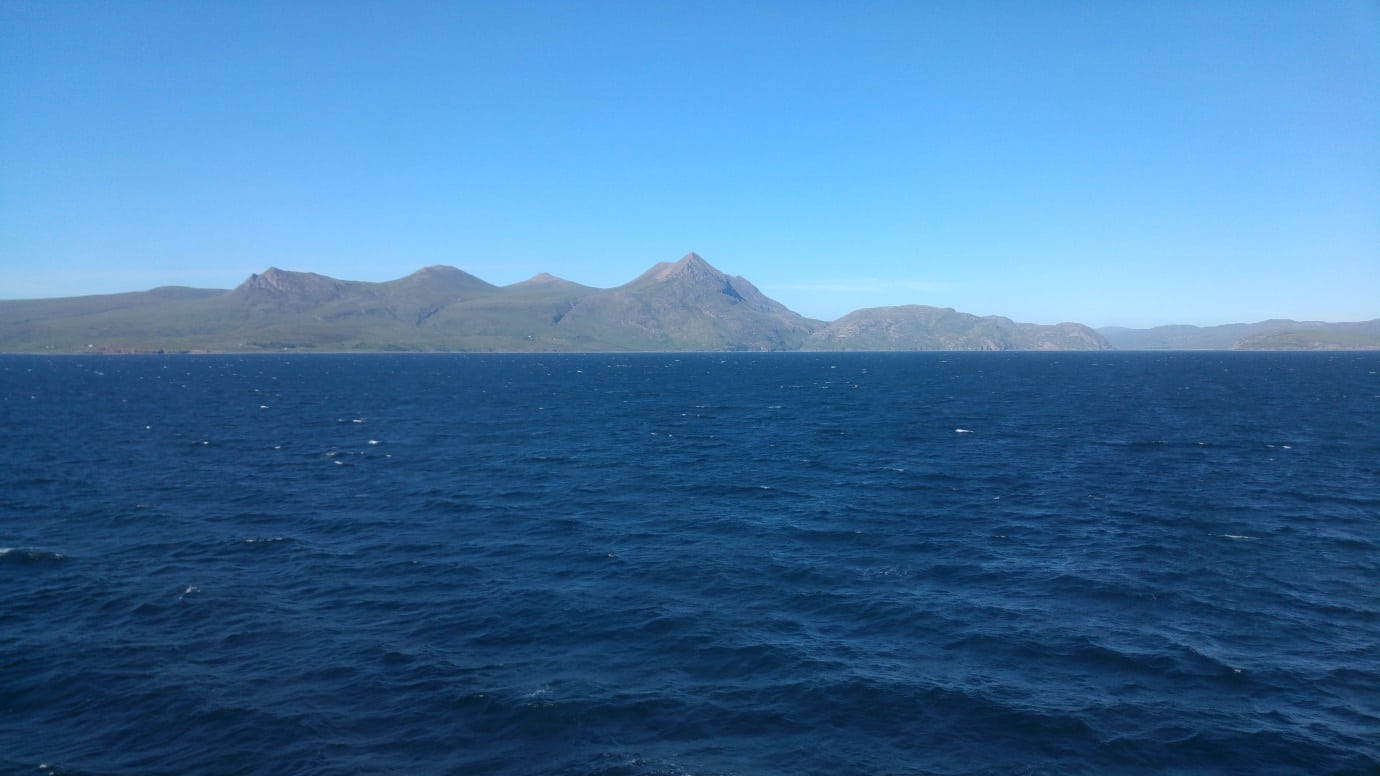Marine
An Egg Hunt of Large Proportions
June 28, 2018 by Marine Directorate Communications No Comments | Category Collaborations, Fisheries, Marine Directorate general, Marine Directorate Science, Marine Directorate Surveys, Research Vessel Surveys
Survey: 0118H MRV Altaire (Part 3)
Duration: 22nd May 2018 – 6th June 2018
This survey was tasked with providing answers to one very simple but, up to now, unanswered question. How much further west of the current survey extent would a mackerel egg survey need to go to secure a mackerel spawning boundary, in other words how far would we have to sample until we found zero eggs?
A similar survey was conducted last year aboard an Irish charter vessel which surveyed all the way out to 57’45N 23’45W and although the abundance of eggs found were low it still fell short of providing a zero boundary. Also it only undertook a single western transect as it had a broader remit which, together with input from the International Ecosystem Survey in the Nordic Seas would provide useful information to establish a Northern spawning boundary during May/June when the mackerel spawning in this Northern region is at its most expanded.
Survey 0118H was therefore tasked with mapping the mackerel spawning activity in the northwestern region, including Rockall and Hatton Bank and further west until a zero boundary was established. This would be completed by deploying the Gulf 7 plankton sampler on a series of transects going east to west and vice versa; heading steadily north up towards Iceland.
How far west Altaire had to go to establish this boundary would dictate the Northern extent of the survey, as in addition transit time to and from the survey area was also significant. Altaire departed from Ullapool on the 22nd May at just after midday in near perfect weather conditions and after performing two sets of flowmeter calibrations she continued South through the Minch before heading West and onwards towards Rockall Bank. Looking after the science onboard, there was very much an international flavour to the survey with scientists from Scotland, the Netherlands, Ireland, and Germany.
South through the Minch before heading West and onwards towards Rockall Bank. Looking after the science onboard, there was very much an international flavour to the survey with scientists from Scotland, the Netherlands, Ireland, and Germany.
Calm conditions were experienced during most of the survey and progress was excellent. The most southerly transect at 55’45N was completed in just over a day and a half with the zero boundary finally being reached at 25’45W; which was well west of Hatton Bank and in fact way over and into the South Iceland Basin. A similar pattern continued further North with the boundary tracking in a northeasterly direction and running parallel with the edge of Hatton Bank.
A lthough some freshly spawned eggs were observed over the colder and deeper waters of the South Iceland Basin; it was clear that the majority of the spawning activity was taking place on the banks themselves. This pattern continued into the northern reaches of the Iceland basin with egg numbers increasing, together with the temperature, towards the eastern end of the transects located on the fringes of the shallower and warmer Iceland – Faroe – Scotland Ridge .
lthough some freshly spawned eggs were observed over the colder and deeper waters of the South Iceland Basin; it was clear that the majority of the spawning activity was taking place on the banks themselves. This pattern continued into the northern reaches of the Iceland basin with egg numbers increasing, together with the temperature, towards the eastern end of the transects located on the fringes of the shallower and warmer Iceland – Faroe – Scotland Ridge .
From there Altaire proceeded west then North; first across the mid-Atlantic Ridge at Reykjanes before surveying up the west coast of Iceland; eventually crossing into the Arctic Circle and deploying the Gulf Sampler at 66’34N and 24’31W.
Whilst surveying northwards up the western side of Iceland calm and clear conditions were experienced as were blue and humpback whales and Orca. Disappointingly, the following day the weather became very cold with thick fog so there was no chance for any scenery shots although we knew that stunning coastline views were close by.
The water temperature at 20m north of the Reykjanes ridge was around 8 degrees Celsius; cooling further to just over 6 degrees by the time we hit the Arctic Circle. We were fairly confident that we would not find any mackerel eggs on this western leg and reassuringly that turned out to be the case. Mackerel do not tend to spawn in water with temperatures much below 8.5 degrees and so we had to wait until midway along the last transect before we started picking up mackerel eggs again south of Iceland.
There were 83 deployments, in total, with four flowmeter calibration runs and a further 79 plankton deployments. During the survey Altaire covered somewhere in the region of 3400nm. The survey was very successful in defining a hard spawning boundary in the northwest albeit Altaire was required to survey out to nearly 27 degrees west to secure it. It was also successful in describing the bigger picture; specifically the temperature profile within that region with the warmer temperatures observed on the flanks of the offshore banks yielding significant numbers of mackerel eggs whereas the colder water located over the deeper basins yielding very few or no spawning.
Interestingly on the sampled locations, where we also sampled last year, we were able to make a direct comparison and noticed a significant difference in the surface temperatures with those from this year being typically 1- 1.5 degrees Celsius colder. These data together with the additional information provided by the Nordic surveys will be extremely useful and will inform the planning process for the triennial mackerel egg survey in 2019 where Marine Scotland Science plays a lead role.
Finally , a massive thank you to all of the crew on the MFV Altaire for all the help, advice and assistance provided during the survey which was invaluable and ultimately ensured the overall success of the survey.
Further Information:
Tags: Altaire, Ecosystem, Hatton Bank, mackerel, research, Rockall, science, Survey



Leave a comment